I have three variables and each one has a confidence interval, as follow
variable lowerci beta upperci
a 0.86471152 0.87615515 0.88759878
b 0.966626566 0.970159119 0.973691671
c 0.94946211 0.955502661 0.961543211
I want to see if they overlap (clearly they don't, but I want the graph).
How can I do this in R?
